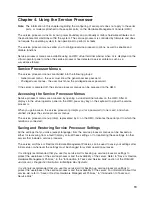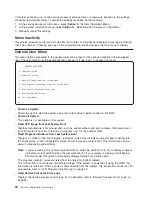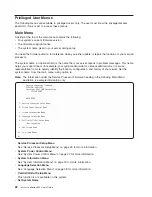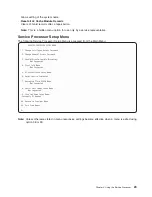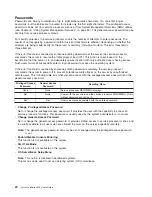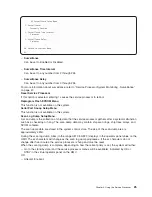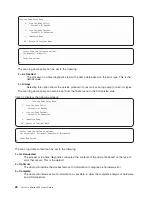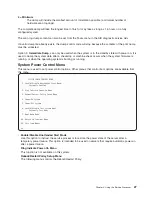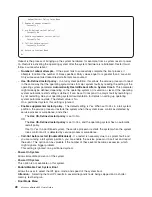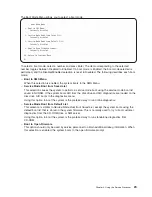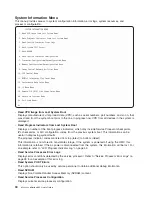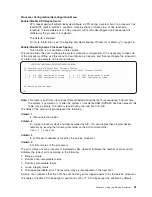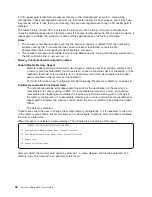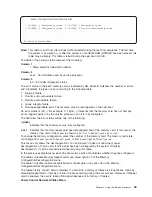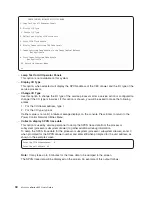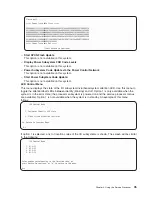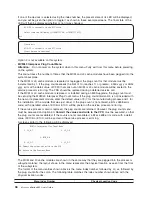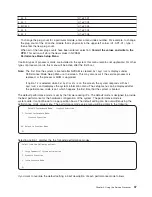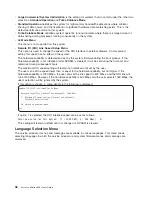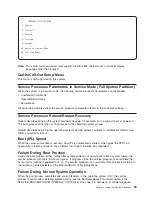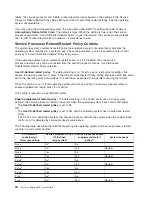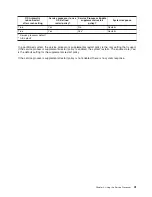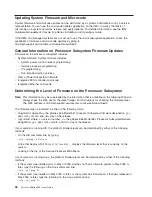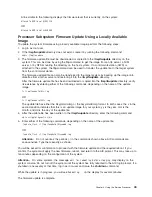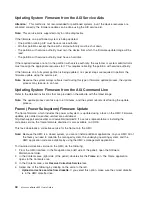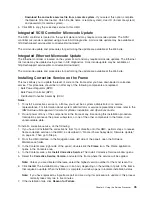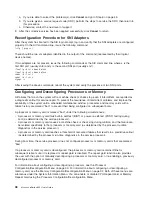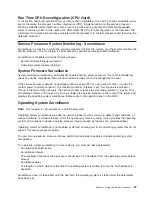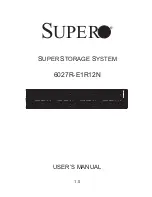
If
CPU
repeat
gard
is
disabled,
processors
that
are
in
the
″
deconfigured
by
system
″
state
will
be
reconfigured.
These
reconfigured
processors
are
then
tested
during
the
boot
process,
and
if
they
pass,
they
remain
online.
If
they
fail
the
boot
testing,
they
are
deconfigured
even
though
CPU
repeat
gard
is
disabled.
The
failure
history
of
each
CPU
is
retained.
If
a
processor
with
a
history
of
failures
is
brought
back
online
by
disabling
repeat
gard,
it
remains
online
if
it
passes
testing
during
the
boot
process.
However,
if
repeat
gard
is
enabled,
the
processor
is
taken
offline
again
because
of
its
history
of
failures.
Notes:
1.
The
processor
numbering
scheme
used
by
the
service
processor
is
different
from
the
numbering
scheme
used
by
AIX.
To
ensure
that
the
correct
processor
is
selected,
consult
the
AIX
documentation
before
configuring
or
deconfiguring
a
processor.
2.
The
number
of
processors
available
to
AIX
can
be
determined
by
issuing
the
following
command
on
the
AIX
command
line:
bindprocessor
-q
.
v
Memory
Configuration/Deconfiguration
Menu
Enable/Disable
Memory
Repeat
Memory
repeat
gard
will
automatically
deconfigure
a
memory
riser
card
during
a
system
boot
if
a
memory
card
has
failed
BIST
(built-in
self-test),
caused
a
machine
check
or
checkstop,
or
has
reached
a
threshold
of
recoverable
errors.
The
memory
will
remain
deconfigured
until
repeat
gard
is
disabled
or
the
memory
card
is
replaced.
For
more
information,
see
“Configuring
and
Deconfiguring
Processors
or
Memory”
on
page
46.
Runtime
Recoverable
Error
Repeat
Gard
The
runtime
recoverable
error
repeat
gard
flag
controls
the
deallocation
of
the
memory
if
a
recoverable
error
occurs
during
runtime.
If
a
recoverable
memory
error
occurs,
and
runtime
recoverable
error
repeat
gard
is
disabled,
the
system
will
continue
running
with
no
change
in
the
memory
configuration.
If
a
recoverable
memory
error
occurs,
and
runtime
recoverable
error
repeat
gard
is
enabled,
the
memory
card
on
which
the
error
occurred
will
be
garded
out
(taken
offline).
The
default
is
disabled.
These
menus
allow
the
user
to
change
the
system
memory
configuration.
If
it
is
necessary
to
take
one
of
the
memory
cards
offline,
this
menu
allows
you
to
deconfigure
a
memory
card,
and
then
reconfigure
the
card
at
a
later
time.
When
this
option
is
selected,
a
menu
displays.
The
following
is
an
example
of
this
menu:
MEMORY
CONFIGURATION/DECONFIGURATION
MENU
77.
Enable/Disable
Memory
Repeat
Gard:
Currently
Enabled
78.
Runtime
Recoverable
Error
Repeat
Gard:
Currently
Disabled
1.
Memory
card
98.
Return
to
Previous
Menu
After
you
select
the
memory
card
option
by
entering
1,
a
menu
displays,
allowing
the
selection
of
a
memory
card.
The
following
is
an
example
of
this
menu.
32
Eserver
pSeries
655
User’s
Guide
Summary of Contents for p 655 series
Page 1: ...pSeries 655 User s Guide SA38 0617 03 ERserver...
Page 2: ......
Page 3: ...pSeries 655 User s Guide SA38 0617 03 ERserver...
Page 10: ...viii Eserver pSeries 655 User s Guide...
Page 14: ...xii Eserver pSeries 655 User s Guide...
Page 16: ...xiv Eserver pSeries 655 User s Guide...
Page 24: ...6 Eserver pSeries 655 User s Guide...
Page 32: ...14 Eserver pSeries 655 User s Guide...
Page 36: ...18 Eserver pSeries 655 User s Guide...
Page 90: ...72 Eserver pSeries 655 User s Guide...
Page 144: ...126 Eserver pSeries 655 User s Guide...
Page 208: ...190 Eserver pSeries 655 User s Guide...
Page 214: ...196 Eserver pSeries 655 User s Guide...
Page 217: ......


